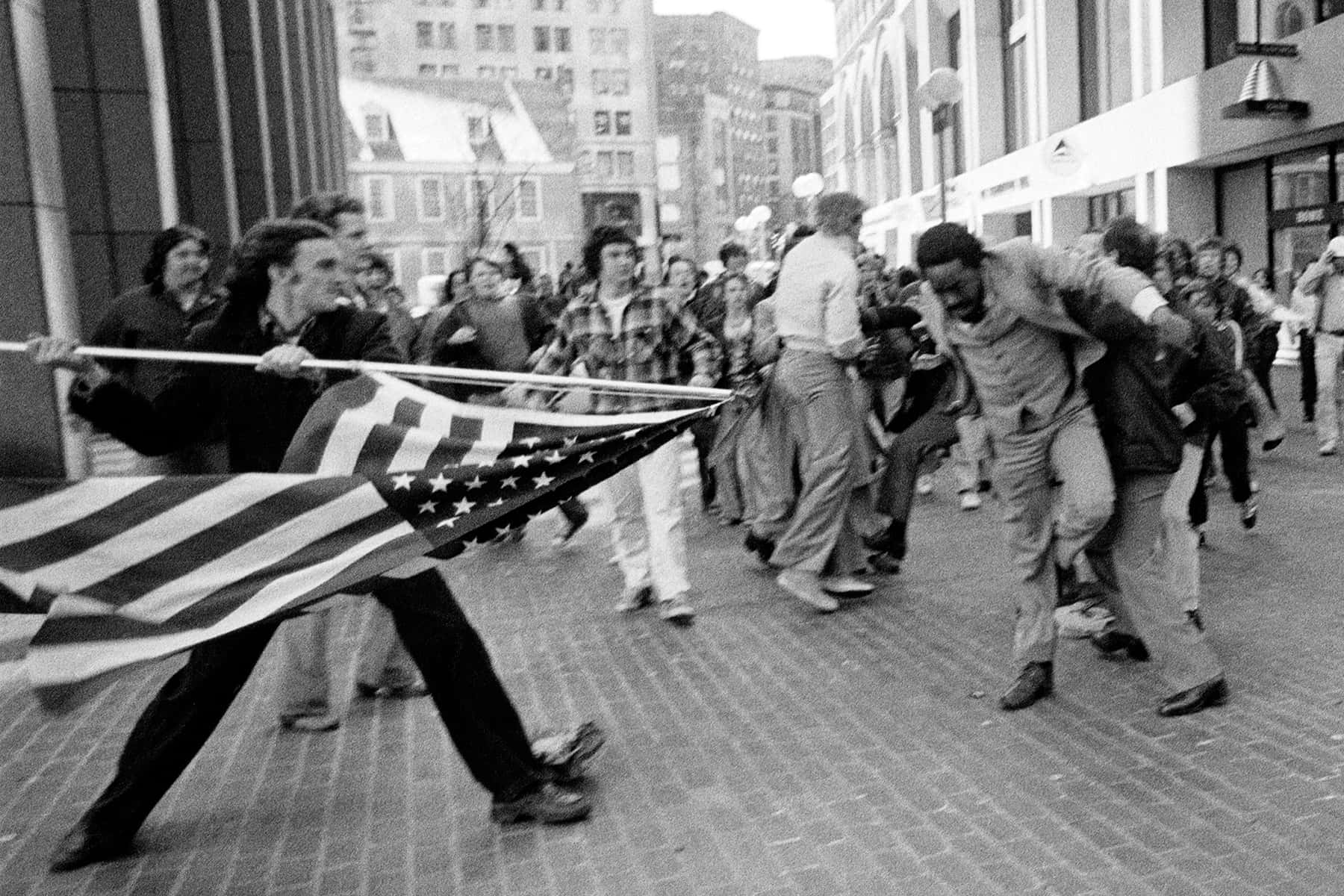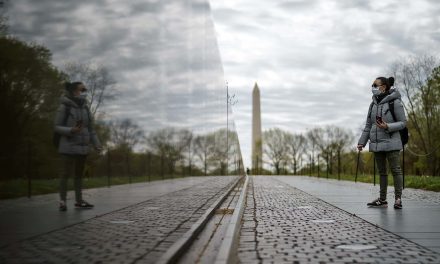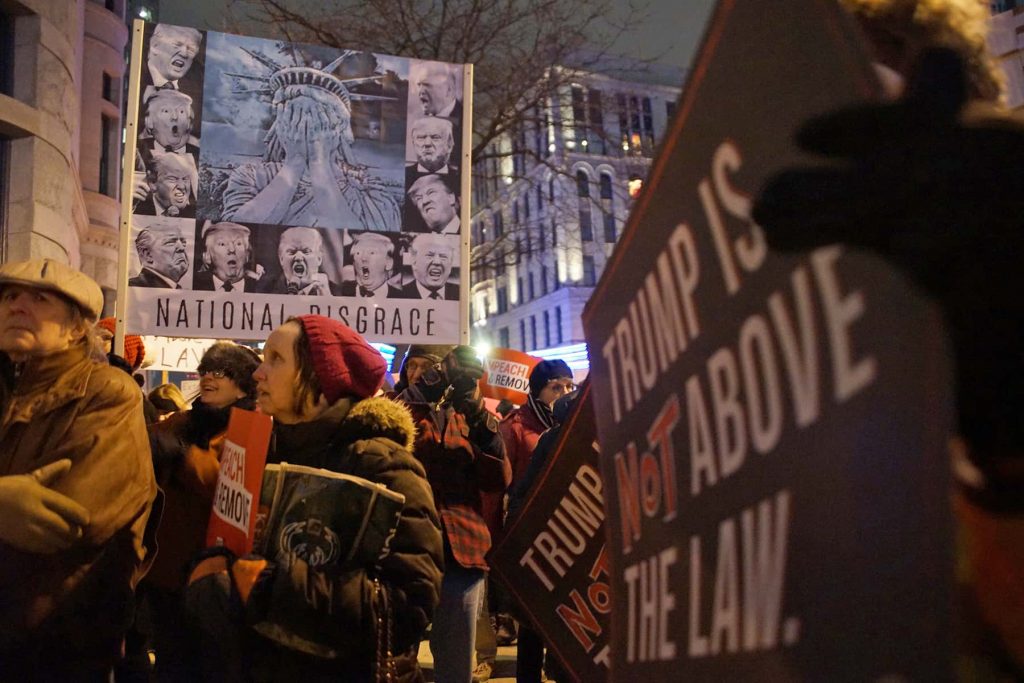
“Institutional racism insidiously cloaks racial discrimination in the innocence of the accidental.” – Robert B. Baker, PhD
“I love America more than any other country in this world, and, exactly for this reason, I insist on the right to criticize her perpetually.” – James Baldwin
“From that moment on, I was no longer a liberal, a believer in the self-correcting character of American democracy. I was a radical, believing that something fundamental was wrong in this country–not just the existence of poverty amidst great wealth, not just the horrible treatment of black people, but something rotten at the root.” – Howard Zinn, Historian
For far too many years white voices have been the only voices that have been considered legitimate in American discourse about race. The opinions, views, scholarship and lived experiences of non-whites have been considered illegitimate by whites for most of American history. Even now, many white people consider anything written or said that exposes the actions of whites that clearly demonstrates their discriminatory acts towards non-whites as an “anti-white” message.
One man’s truth is another man’s lie. Despite ample evidence, some white people refuse to acknowledge that whites have ever done any harm to people of color in this country. They argue that the evidence is made up and that “you people” are just bashing white people. It’s easy to ignore facts when they expose things that you’d prefer not to believe. They argue that the American myth of “liberty and justice for all” should not be slandered by “made up” evidence to the contrary.
“Either America will destroy ignorance or ignorance will destroy the United States.” – W.E.B. DuBois
One of my favorite movie scenes is from the 1992 movie A Few Good Men staring Tom Cruise and Jack Nicholson. The most famous line from the film comes during a heated cross-examination of US Marine Corps Colonel Nathan R. Jessep, played by Nicholson and US Navy Lieutenant Junior Grade Daniel Kaffee played by Cruise.
Kaffee: Colonel Jessup, did you order the Code Red?!
Judge: You don’t have to answer that question!
Jessup: I’ll answer the question. You want answers?
Kaffee: I think I’m entitled!
Jessup: You want answers?!
Kaffee: I want the truth!
Jessup: You can’t handle the truth!
The line by Nicholson is one of the most iconic lines in American cinematic history. It is fitting that in a conversation about race, we must declare that many people in this country “can’t handle the truth.” Angry whites have on rare occasions confronted me as I travel around the country teaching about the history of race and racism accusing me of peddling mistruths and blaming and shaming white people. There is a famous idiom that states, “if the shoe fits, wear it” meaning that something said or suggested about a person is true and that the person should accept it as true. America, the shoe is a perfect fit.
There are some very hard truths that some people refuse to accept. As a result, a line of demarcation has been drawn in this country based on race. On one side of the line are white people who claim America has never or not in recent times done anything wrong to people of color – while on the other side – are people of color who possess a lifetime of experiences and copious evidence to the contrary.
What I find amazing is that for most of American history white people were not ashamed of their unabashed racism and discrimination against people of color, speaking clearly and articulating in writing that they were doing exactly what some white people today claim they never did. White people did not feel compelled to lie, simply because they felt completely within their “rights” and justified in mistreating people of color. They were open and honest about being racists and discriminating on purpose.
Virginia State Senator Carter Glass proclaimed that the voting laws passed in 1902 would “eliminate the darkey as a political factor in this State in less than five years, so that in no single county of the Commonwealth will there be the least concern felt for the complete supremacy of the white race in the affairs of government.”
Now that we’ve been mis-educated by the omission of these things in our formal education, some have tried to re-write this history. It won’t work. At least not for most people of color. We know the truth because it’s our truth based on our lived experiences that can’t be erased. We can sometimes forgive but we will never forget. On the other hand the power of mis-education is strong. The Founder of Black History Month Dr. Carter G. Woodson warned us in his famous book the Mis-Education of the Negro:
“If you can control a man’s thinking you do not have to worry about his action. When you determine what a man shall think you do not have to concern yourself about what he will do. If you make a man feel that he is inferior, you do not have to compel him to accept an inferior status, for he will seek it himself. If you make a man think that he is justly an outcast, you do not have to order him to the back door. He will go without being told; and if there is no back door, his very nature will demand one.”
There are many examples of attempts to misconstrue the history of racial discrimination and race based violence by whites in this country. The stories we learn about slavery – if we learn anything – are told to convince us that “slavery wasn’t so bad,” that “the slaves were singing in the fields,” that many “masters treated their slaves well.”
Likewise Americans tell themselves that the original inhabitants of this land were “savages,” who “misused the land,” “scalped good white people,” and are nothing but “Indian givers” for asking for their land back.
“When asked by an anthropologist what the Indians called America before the white men came, an Indian said simply “Ours.” – Van Deloria
We are told that the Asians who came from China, Japan, Korea and many other places were a “dirty,” “sneaky,” “dishonest,” “Yellow Peril” and “mongrel plague.”
“At the state’s constitutional convention of 1878, John F. Miller warned: “Were the Chinese to amalgamate at all with our people, it would be the lowest, most vile and degraded of our race, and the result of that amalgamation would be a hybrid of the most despicable, a mongrel of the most detestable that has ever afflicted the earth.” – Ronald Takaki, “Strangers From a Different Shore”
When in 1942 the U.S. government placed Japanese-Americans in so-called internment camps but did not do the same to German-Americans or Italian-Americans the racial double standard was clear to see. On February 19, 1942, President Franklin D. Roosevelt signed Executive Order 9066 supposedly with the intention of preventing espionage on American shores. The prevailing mood of the country did not allow him to include whites of German and Italian ancestry. They were just as big of a threat if not more so.
Despite this, 117,000 Japanese, most of them American citizens were forced from their homes, had their businesses and all personal property except what they could fit in a suitcase taken, their children pulled out of school and placed in custody through 1945. Canada and Mexico followed suit by arresting and holding Japanese in detention at the behest of the U.S. government.
Just after the December 7, 1941 attack on Pearl Harbor Japanese were arrested without cause around the country, and by January transferred to facilities in Montana, New Mexico and North Dakota. In most cases most of them were not able to tell their family members where they were being taken. Anyone who was at least 1/16th Japanese was evacuated, including over 17,000 children under 10, and several thousand elderly and handicapped persons according to the History Channel. Treated like animals, they were placed in despicable conditions in horse stalls, cowsheds, and livestock pavilions. Eventually they were placed in one of ten permanent housing camps called Relocation Centers. Several detainees were killed while attempting to escape the camps or standing too close to the fence. It took a lawsuit to end the internment. In Endo v. the United States, The U.S. Supreme Court ruled against the War Relocation Authority. “[W]e conclude that, whatever power the War Relocation Authority may have to detain other classes of citizens, it has no authority to subject citizens who are concededly loyal to its leave procedure.”
“We have no one to go to for help. Not even a church. Anything goes, now that our President Roosevelt signed the order to get rid of us. How can he do this to his own citizens? No lawyer has the courage to defend us. Caucasian friends stay away for fear of being labeled “Jap lovers.” There’s not a more lonely feeling than to be banished by my own country. There’s no place to go.” – Kiyo Sato, Kiyo’s Story: A Japanese-American Family’s Quest for the American Dream
Mexican and Central Americans have been called “Spics,” “Wetbacks,” “Beaners,” “Illegals,” and other derogatory names as they’ve tried to fit into American society.
“We didn’t cross the border, the border crossed us.” – Anonymous Chicano activist
“When Mexico sends its people, they’re not sending their best. They’re sending people that have a lot of problems, and they’re bringing those problems with us. They’re bringing drugs. They’re bringing crime. They’re rapists. And some, I assume, are good people.” – Republican Presidential candidate Donald Trump June 2015
These various groups of non-whites have been marginalized, spat upon, discriminated against, excluded, beaten, raped, and killed simply because they did not fit in, or simply not accepted by whites as first class Americans. American jurisprudence is full of case law justifying treating people of color differently than whites. Multiple laws such as the Black Codes and hundreds of segregation statues have cemented the status of blacks and other people of color.
“Federal Indian law” is the essence of United States law as it refers to Native Americans – treaties, statutes, executive orders, administrative decisions, and court cases have impacted the ways of life of Indians throughout American history. President Andrew Jackson signed the most infamous of these laws, The Indian Removal Act, into law on May 28, 1830. The law gave the President the right to force Indians to abandon their traditional homelands in the Southeast and forcibly moved them to “unsettled lands” west of the Mississippi in exchange for Indian lands within existing state borders being owned by the federal government and eventually sold to white land speculators and “settlers.”
The so-called “Indian Wars” we learned about in school and by watching old TV shows and movies were simply self-defense on the part of the Indians. The term “Indian Wars” is a misnomer because it intimates that Indians started the wars. When strangers come into your land and begin taking it for themselves and you take a defensive stand you are celebrated by Americans, if you are white. Indians on the other hand have been vilified, and called “savage beasts” by whites. What was essentially a white land grab was proclaimed “Manifest Destiny” and supposedly ordained by God.
The same thing happens when you live peacefully on a beautiful set of islands in paradise in the middle of the Pacific Ocean and whites decide they want Hawaii for themselves. The History Channel tells us, “a group of American sugar planters under Sanford Ballard Dole overthrow Queen Liliuokalani, the Hawaiian monarch, and establish a new provincial government with Dole as president. The coup occurred with the foreknowledge of John L. Stevens, the U.S. minister to Hawaii, and 300 U.S. Marines from the U.S. cruiser Boston were called to Hawaii, allegedly to protect American lives.” You may recognize the name Dole from the Dole Food Company formerly known as the Hawaiian Pineapple Company. You’ve probably eaten Dole fruit for years without knowing the company is named after the leader of the theft of the Hawaiian Islands and overthrow of their queen in January 1893 accompanied by the mighty U.S. Marines. By 1900, Hawaii was organized into a formal U.S. territory and became the 50th state in 1959.
These ugly truths are some of the pieces of American history I share with audiences to help them understand how we got here. An honest telling of American history cannot be told without white people looking bad. It is a simple and indisputable truth that many of them have and continue to treat people of color badly. America has not reformed itself into a “post-racial” society. That is a myth.
The adjective post-racial means “characterized by the absence of racial discord, discrimination, or prejudice previously or historically present.” Can we honestly say that this is what America is today? Of course we can’t say it with a straight face if we pay attention to the world we live in.
“I will say then that I am not, nor ever have been, in favor of bringing about in any way the social and political equality of the white and black races, [applause]—that I am not nor ever have been in favor of making voters or jurors of negroes, nor of qualifying them to hold office, nor to intermarry with white people; and I will say in addition to this that there is a physical difference between the white and black races which I believe will forever forbid the two races living together on terms of social and political equality. And inasmuch as they cannot so live, while they do remain together there must be the position of superior and inferior, and I as much as any other man am in favor of having the superior position assigned to the white race.” – Abraham Lincoln, September 18, 1858 during debate with Stephen A. Douglas
Those who want to “move past” race and ignore racism declare that we are in a post-racial America. In 2008, when Barack Obama was elected as the first black president of the United States, people proclaimed we had finally become a nation that transcended race. Looking at the election results tells us a different story. In 2008 Obama received about 42 percent of white votes but only 39 percent in 2012. In both cases, a significantly large majority of whites did not vote for the “black guy.” You would not know this because many whites that did not vote for him claim they did.
James Baldwin is one of the greatest American writers and social critics of all time. He told us many years ago about the power of learning the truth. “The paradox of education is precisely this – that as one begins to become conscious one begins to examine the society in which he is being educated.” Far too many whites refuse to honestly examine the society they live in.
A good friend of mine once told me “never assume they don’t know” speaking about what white people know about their history of mistreating people of color. I told him “just because you know it, does not mean you know it well, and more importantly that you are willing to admit it.”
Responding to the 1954 Brown v. Board desegregation decision by the U.S. Supreme Court a group of U.S. lawmakers in Washington DC drafted what they called The Southern Manifesto in 1956. Showing the dishonesty still so prevalent in American race discourse, they said these infamous words:
“This unwarranted exercise of power by the Court, contrary to the Constitution, is creating chaos and confusion in the States principally affected. It is destroying the amicable relations between the white and Negro races that have been created through 90 years of patient effort by the good people of both races. It has planted hatred and suspicion where there has been heretofore friendship and understanding … In this trying period, as we all seek to right this wrong, we appeal to our people not to be provoked by the agitators and troublemakers invading our States and to scrupulously refrain from disorder and lawless acts.”
Of course the opposite happened, and the level of violence against black people increased tremendously during the remaining years of the Civil Rights Movement. It wasn’t just the hooded terrorists of the Ku Klux Klan that beat, maimed and murdered black people in Mississippi, Georgia and Alabama, but the so-called “good people of the South and North.”
“I’ve been in many demonstrations all across the South, but I can say that I have never seen, even in Mississippi and Alabama, mobs as hostile and as hate-filled as I’m seeing in Chicago.” – Rev. Dr. Martin Luther King Jr.
Some of the more honest white men in the country lived in the South. They freely admitted their racial prejudice. These are a few examples of what they said.
“There is no case in history where the Caucasian race has survived social integration. We will not drink from the cup of genocide.” – Mississippi Governor Ross Barnett
“It is essential to the perpetuation of our Anglo-Saxon civilization that white supremacy be maintained and to maintain our civilization there is only one solution, and that is either by segregation within the United States, or by deportation of the entire Negro race.” – Mississippi Governor and U.S. Senator Theodore Bilbo
“This is a white man’s country, and will always remain a white man’s country.” – South Carolina Governor, U.S. Senator and U.S. Supreme Court Justice James F. Byrnes
“The South loves the Negro in his place but his place is at the back door.” – Georgia Governor Eugene Talmadge
“In the name of the greatest people that have ever trod this earth I draw the line in the dust and toss the gauntlet before the feet of tyranny … and I say … segregation now … segregation tomorrow … segregation forever.” – Alabama Governor George Wallace
I detest what these men said but at the same time appreciate their honesty. Nothing is worse than a dishonest person who dislikes you but pretends to be your friend and ally. Dr. King spoke about his distrust of the white moderate in his Letter From a Birmingham Jail.
“First, I must confess that over the past few years I have been gravely disappointed with the white moderate. I have almost reached the regrettable conclusion that the Negro’s great stumbling block in his stride toward freedom is not the White Citizen’s Counciler or the Ku Klux Klanner, but the white moderate, who is more devoted to “order” than to justice; who prefers a negative peace which is the absence of tension to a positive peace which is the presence of justice; who constantly says: “I agree with you in the goal you seek, but I cannot agree with your methods of direct action”; who paternalistically believes he can set the timetable for another man’s freedom; who lives by a mythical concept of time and who constantly advises the Negro to wait for a “more convenient season.” Shallow understanding from people of good will is more frustrating than absolute misunderstanding from people of ill will. Lukewarm acceptance is much more bewildering than outright rejection.”
© Photo
Stanley Forman














